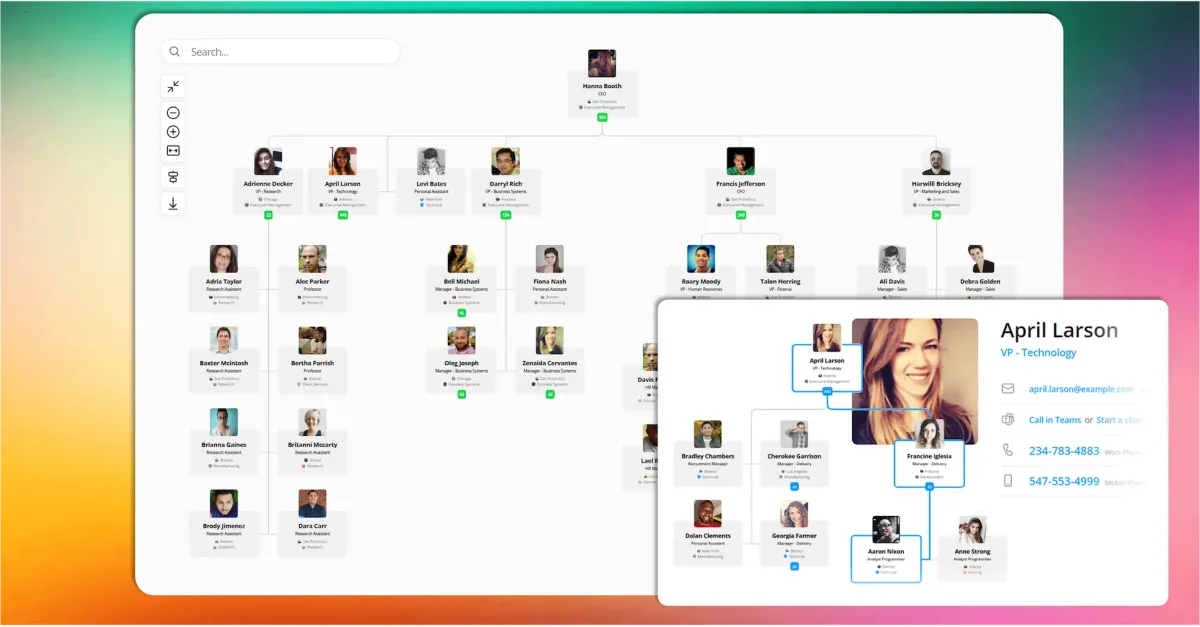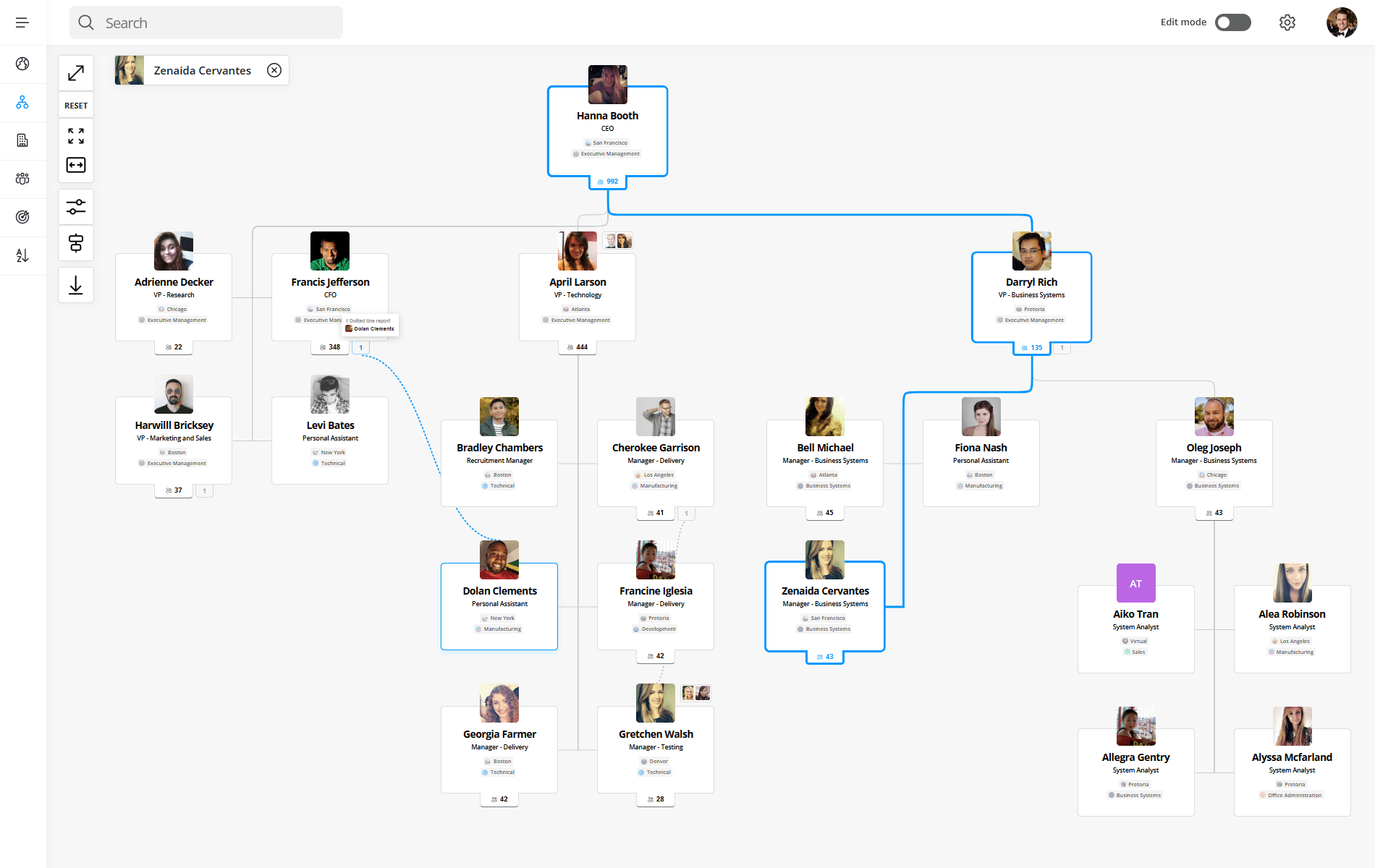Org Chart Implementation Playbook for HR & IT Teams
A step‑by‑step playbook for HR and IT leaders to launch, govern, and measure a live organizational chart. Includes data‑readiness checklists, change‑management tips, and KPIs.

For HR and IT teams, creating a single org chart is easy, but deploying an accurate, dynamic, live org chart tool to your entire company is a real challenge. Your organizational chart isn’t just a diagram; it’s a living resource that influences onboarding, workforce planning, and team alignment.
Without clear collaboration between HR and IT, managing an org chart often becomes complicated:
- Outdated PDFs confuse new hires and delay onboarding.
- Shadow spreadsheets emerge on shared drives, causing data conflicts.
- Security risks arise from manual exports of sensitive employee information.
This playbook guides HR and IT teams through a simple, proven process to implement, maintain, and optimize your org chart, turning it into a trusted resource that everyone can rely on.
Why HR & IT Need to Collaborate
Your organizational chart sits at the crossroads of HR’s people data and IT’s system integrations. Without clear coordination, your org chart quickly becomes outdated or inaccurate.
Establishing joint ownership between HR and IT ensures your org chart stays up-to-date, secure, and accurate. Think of this collaboration as DevOps, but for org charts: HR manages people data accuracy, while IT ensures seamless integration and real-time updates.
Phase 1: Data Readiness Checklist
An accurate org chart depends entirely on clean, consistent data. Before setting up your org chart tool, HR and IT should jointly audit key data points:
| Data Point | Source | Essential | Recommended |
|---|---|---|---|
| Employee ID | HRIS (Workday, BambooHR)/ Entra ID / OneDirectory | ✓ | |
| Manager (Direct Line) | HRIS / Entra ID / OneDirectory | ✓ | |
| Department / Cost Center | HRIS / OneDirectory | ✓ | |
| Job Title | HRIS / Entra ID / OneDirectory | ✓ | |
| Profile Photo | HRIS / Entra ID / OneDirectory | ✓ | |
| Dotted-line Manager | Org chart tool (custom field) / OneDirectory | ✓ | |
| Skills / Expertise Tags | Talent management system / OneDirectory | ✓ |
Phase 2: Choosing the Right Org Chart Tool
Evaluate org chart software through these critical factors:
- Integration: Does it sync directly with your HRIS or Microsoft Entra ID, ensuring automated updates?
- Real-time Updates: How quickly do HR data changes reflect in the org chart?
- Security & Privacy: Does it offer robust permission settings, audit logs, and compliance with data regulations?
- Scalability: Can it efficiently handle your organization's growth without performance issues?
- Advanced Features: Does it support dotted-line reporting, assistants, scenario planning, and multiple chart views?
OneDirectory allows you to quickly implement and deploy a fully live, interactive, and automated org chart by syncing directly with your Microsoft Entra ID data. It also enhances your data with built-in fields such as assistants and dotted-line managers, ensuring richer, more comprehensive charts right from the start.

Consider a free trial or demo to test real-world functionality before making a decision.
Phase 3: Establishing Governance & Change Management
Clear roles and processes make managing your org chart effortless. Define responsibilities:
| Activity | HR Responsibilities | IT Responsibilities | Frequency |
| Data imports | Validate HRIS data | Configure integration & schedule sync | Weekly |
| New-hire updates | Approve and provide data/photos | Upload via API or automated sync | Bi-weekly |
| Access & permissions audit | Define visibility rules | Manage SSO and access groups | Quarterly |
| New feature rollouts | Communicate updates internally | Activate and configure features | As needed |
Phase 4: Driving Adoption Across Your Organization
Your org chart only adds value if your team actively uses it. Boost adoption with these proven tips:
- Multi-channel launch: Communicate regularly via email, intranet, and team meetings.
- Integration: Pin the org chart prominently within Teams, Slack, SharePoint, or your intranet.
- Onboarding: Introduce the org chart as part of every new employee's onboarding process.
- Manager advocacy: Encourage managers to use and promote the org chart in team meetings.
- Continuous engagement: Regularly highlight new features, success stories, and practical tips.
Measuring Success: 6 Key Metrics
Monitor these metrics to track your org chart’s effectiveness:
- Update Speed: Ensure changes reflect within 24 hours.
- Active Users: Aim for at least 60% of your workforce using the chart monthly.
- Search Activity: Average two or more searches per user session.
- Accuracy: Maintain over 99% accuracy in reporting relationships.
- Performance: Keep load times under 2 seconds.
- Support Tickets: Reduce org-chart-related inquiries by 50% year-over-year.
Advanced Uses of Your Org Chart
- Dotted-line reporting: Visually represent matrix relationships without duplicating employees.
- Assistants visibility: Clearly display support roles directly within the chart.
- Multiple org charts: Maintain separate charts for projects, divisions, or hypothetical scenarios.
- Scenario planning: Use the org chart as a sandbox to test structural changes before implementation.
Final Thoughts & Next Steps
A dynamic, well-maintained org chart is more than just boxes and lines, it’s the foundation for clear communication, efficient operations, and strategic workforce planning.
Ready to bring your org chart to life?
Schedule a quick 30-minute product walkthrough with our team to see how OneDirectory can transform your org chart into your organization's most valuable asset.


